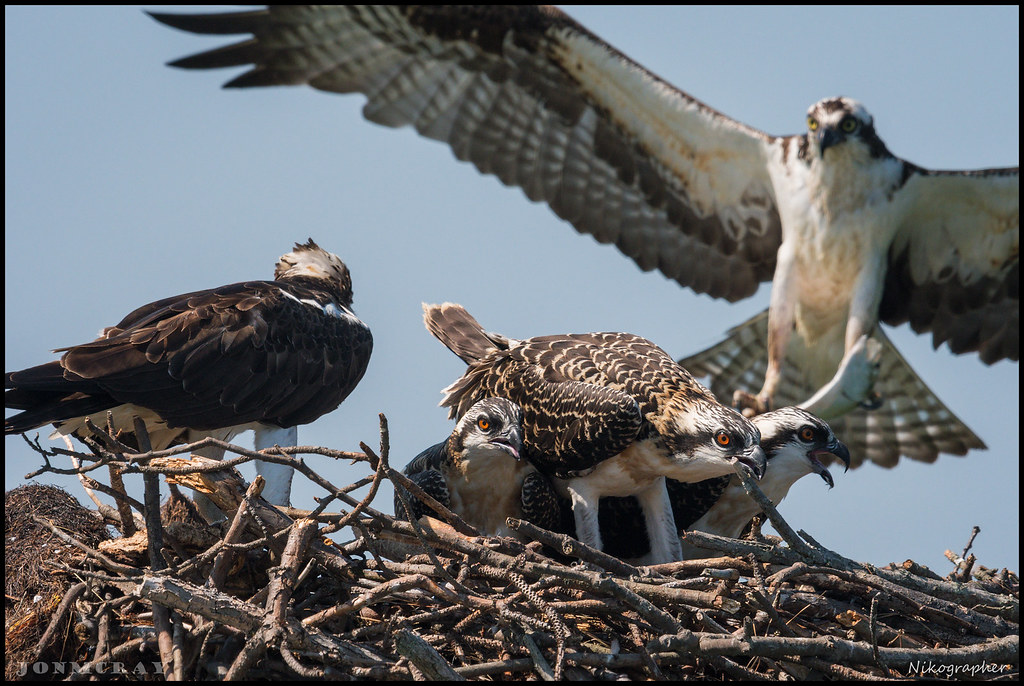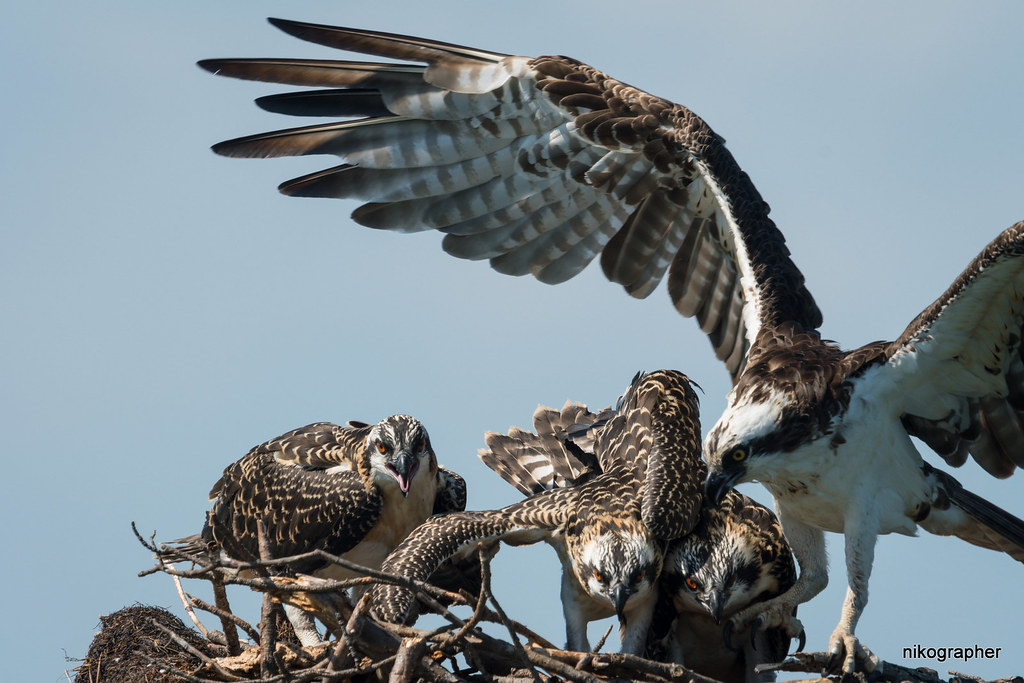In years past I have let other things grab my time and attention and I have missed out on shooting the osprey chicks.
But this year I took a day off of work, and I also took a weekend day and went to 2 specific nests near St. Michaels Maryland to shoot the birds. There are so many nests in Maryland, but I liked these two because they are near but not too near to land, and they each had 3 chicks this year.
At the first nest I watched as one particular bird worked out, flapping away, gaining wing strength.
![July Osprey [3]](https://c7.staticflickr.com/1/641/31737291686_ce300f5920_b.jpg)
What really caught my eye was how the adult was perched slightly higher than the chicks, and was surveying the area but also keeping a close eye on the chicks too.
![July Osprey [2]](https://c7.staticflickr.com/1/456/31737307046_7193d50ce6_b.jpg)
The other nest I shot at had the 3 chicks, and they spent more time being fed. The male osprey was nearby and delivered 3 fish within about an hour while I was there for about 3 hours. It was super hot, above 90/95 degrees.
While shooting from a nearby marina I drank 4 bottles of water to just keep up with the heat and sweat.
The above photos are new posts to flickr. The below images I have shared already, here's the male at the second nest checking me out while carrying a fish, and then coming in for a landing at the nest.


I really like how crowded the nest seemed and how they were all huddled together so closely. They were also very eager to eat, and the female (adult) went right for the fish and then repositioned herself to feed the chicks. The male was more tentative.
It is not that often that I have seen and photographed chicks and both adults in a nest. Usually the male will stay away or fly away quickly. This male was similarly edgy but delivered 3 fish, and stayed in the nest longer than I expected.

Part of the reason could be the distance of the nest from the shore. It was not that close - I used a 600mm and crop body (D500) to shoot them, and with a 1.4 teleconverter for some images. In addition, when the male came by and seemed to do a couple fly-bys checking out the nest and me, but not landing, I backed up slightly, until he landed on the nest. At one point I also used a cheap wireless camera trigger - where I set up the camera on the nest, turned off auto-focus, and then walked away to see if the birds' behavior would change.
During this time the male caught the fish and then would land on a nearby channel marker and eat some of the fish and wait. The male, and female actually while the male was hunting, took to the air to ward off other osprey that intruded on their territory.
Each day was about a 4 hour drive round trip, and probably around 4-6 hours shooting.
The osprey should be coming back in two and a half to three months. It will be fun to see them again.
-Jon
No comments:
Post a Comment